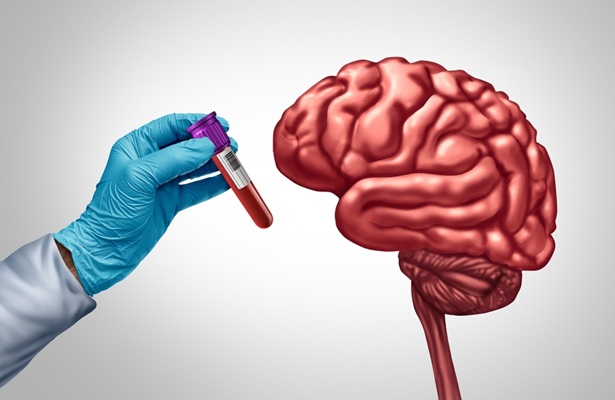Serum α-L-Fucosidase Activity Measured for COVID-19 Infection
|
By LabMedica International staff writers Posted on 22 Apr 2021 |
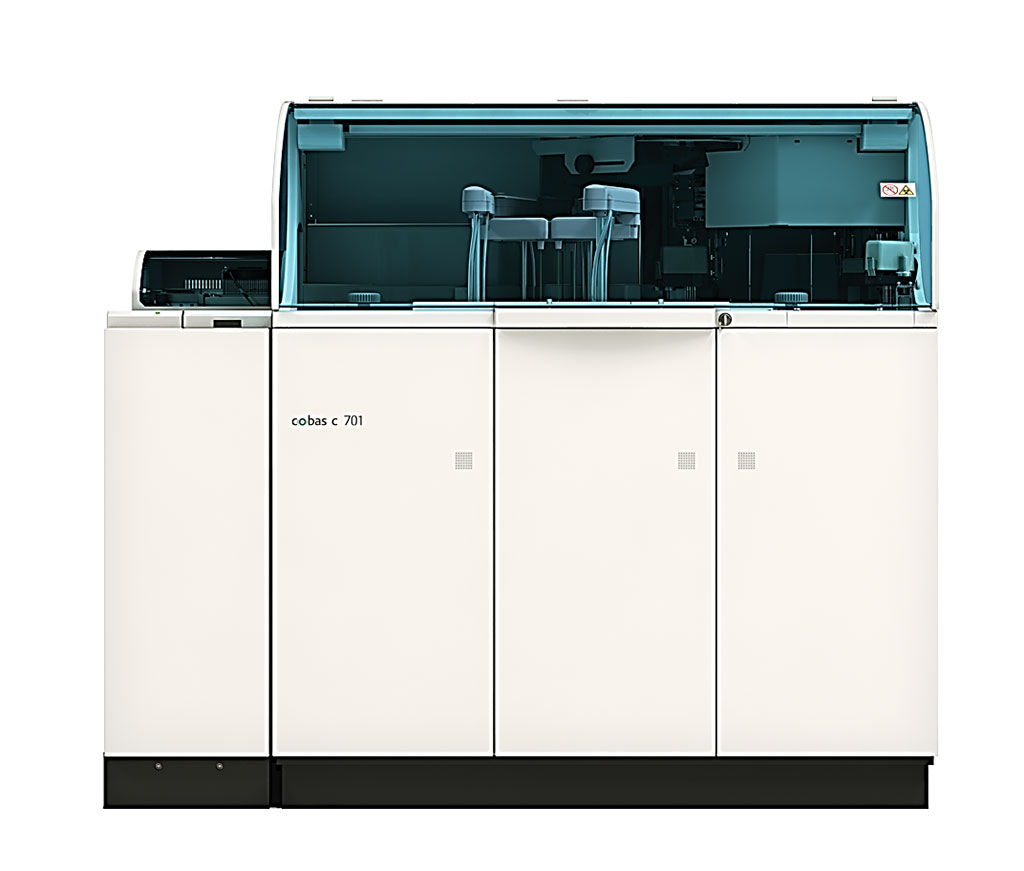
Image: The cobas c 701 module is a high throughput clinical chemistry module that performs photometric assay tests for a wide range of analytes (Photo courtesy of Roche Diagnostics)
An unusual fucosylated LacdiNAc in the receptor-binding domains of the spike protein of COVID-19 has been observed. Reduced fucosylation was also found in a specific Fc domain of IgG antibodies in COVID-19 patients that enhanced the interactions with the activating FcγR, FcγRIIIa.
α-L-fucosidase is the enzyme used to catalyze the hydrolytic removal of L-fucose from the fucosylated glycans in the glycoproteins and glycolipids. Removal of fucose from the airway mucus not only impaired the wound closure of the airway, but also regulated the function of immune cells to defense against bacteria and viruses.
Medical Laboratorians at the University of Chinese Medicine (Guangzhou, China) included 585 COVID-19 patients from December 26, 2019, to March 9, 2020, to analyze the correlations of α-L-fucosidase activity with the nucleic acid test, IgM/IgG, comorbidities, and disease progression. An automated hematology analyzer was used to perform blood count (Sysmex Corporation, Kobe, Japan). Analysis of peripheral blood lymphocyte subsets was performed by BD FACSCanto II (Becton, Dickinson, and Company, Franklin Lakes, NJ, USA).
The clinical biochemical analytes were measured on a Roche Cobas 701 (Roche Diagnostics, Rotkreuz, Switzerland). In particular, the serum amyloid (SAA) and C-reactive protein (CRP) measurements were performed based on latex immunoturbidimetry. The serum α-L-fucosidase activity was quantified using MG-2-chloro-4-nitrobenzene-α-L-fucoside (CNPF) as the substrate (Maccura Biotechnology Co., Ltd, Chengdu, China) on a Roche Cobas 701.
The scientists reported that among the COVID-19 patients, 5.75% were double-negative for nucleic acid and antibodies. All of them had increased α-L-fucosidase, while only one had abnormal serum amyloid A (SAA) and C-reactive protein (CRP). The abnormal rate of α-L-fucosidase was 81.82% before the presence of IgM, 100% in the presence of IgM, and 66.2% in the presence of IgG. The team noted that 73.42% of patients with glucometabolic disorders had increased α-L-fucosidase activity and had the highest mortality of 6.33%. The increased α-L-fucosidase was observed in 55.8% of non-severe cases and 72.9% of severe cases, with an odds ratio of 2.12. The α-L-fucosidase mRNA was irrelevant to its serum activity.
The authors concluded that the change in α-L-fucosidase activity in COVID-19 preceded the IgM and SAA and showed a preferable relation with glucometabolic disorders, which may be conducive to virus invasion or invoke an immune response against SARS-CoV-2. The study was published on April 5, 2021 in the journal Clinica Chimica Acta.
Related Links:
University of Chinese Medicine
Sysmex Corporation
Becton, Dickinson, and Company
Roche Diagnostics
Maccura Biotechnology Co
α-L-fucosidase is the enzyme used to catalyze the hydrolytic removal of L-fucose from the fucosylated glycans in the glycoproteins and glycolipids. Removal of fucose from the airway mucus not only impaired the wound closure of the airway, but also regulated the function of immune cells to defense against bacteria and viruses.
Medical Laboratorians at the University of Chinese Medicine (Guangzhou, China) included 585 COVID-19 patients from December 26, 2019, to March 9, 2020, to analyze the correlations of α-L-fucosidase activity with the nucleic acid test, IgM/IgG, comorbidities, and disease progression. An automated hematology analyzer was used to perform blood count (Sysmex Corporation, Kobe, Japan). Analysis of peripheral blood lymphocyte subsets was performed by BD FACSCanto II (Becton, Dickinson, and Company, Franklin Lakes, NJ, USA).
The clinical biochemical analytes were measured on a Roche Cobas 701 (Roche Diagnostics, Rotkreuz, Switzerland). In particular, the serum amyloid (SAA) and C-reactive protein (CRP) measurements were performed based on latex immunoturbidimetry. The serum α-L-fucosidase activity was quantified using MG-2-chloro-4-nitrobenzene-α-L-fucoside (CNPF) as the substrate (Maccura Biotechnology Co., Ltd, Chengdu, China) on a Roche Cobas 701.
The scientists reported that among the COVID-19 patients, 5.75% were double-negative for nucleic acid and antibodies. All of them had increased α-L-fucosidase, while only one had abnormal serum amyloid A (SAA) and C-reactive protein (CRP). The abnormal rate of α-L-fucosidase was 81.82% before the presence of IgM, 100% in the presence of IgM, and 66.2% in the presence of IgG. The team noted that 73.42% of patients with glucometabolic disorders had increased α-L-fucosidase activity and had the highest mortality of 6.33%. The increased α-L-fucosidase was observed in 55.8% of non-severe cases and 72.9% of severe cases, with an odds ratio of 2.12. The α-L-fucosidase mRNA was irrelevant to its serum activity.
The authors concluded that the change in α-L-fucosidase activity in COVID-19 preceded the IgM and SAA and showed a preferable relation with glucometabolic disorders, which may be conducive to virus invasion or invoke an immune response against SARS-CoV-2. The study was published on April 5, 2021 in the journal Clinica Chimica Acta.
Related Links:
University of Chinese Medicine
Sysmex Corporation
Becton, Dickinson, and Company
Roche Diagnostics
Maccura Biotechnology Co
Latest Immunology News
- Ultrasensitive Liquid Biopsy Demonstrates Efficacy in Predicting Immunotherapy Response
- Blood Test Could Identify Colon Cancer Patients to Benefit from NSAIDs
- Blood Test Could Detect Adverse Immunotherapy Effects
- Routine Blood Test Can Predict Who Benefits Most from CAR T-Cell Therapy
- New Test Distinguishes Vaccine-Induced False Positives from Active HIV Infection
- Gene Signature Test Predicts Response to Key Breast Cancer Treatment
- Chip Captures Cancer Cells from Blood to Help Select Right Breast Cancer Treatment
- Blood-Based Liquid Biopsy Model Analyzes Immunotherapy Effectiveness
- Signature Genes Predict T-Cell Expansion in Cancer Immunotherapy
- Molecular Microscope Diagnostic System Assesses Lung Transplant Rejection
- Blood Test Tracks Treatment Resistance in High-Grade Serous Ovarian Cancer
- Luminescent Probe Measures Immune Cell Activity in Real Time
- Blood-Based Immune Cell Signatures Could Guide Treatment Decisions for Critically Ill Patients
- Novel Tool Predicts Most Effective Multiple Sclerosis Medication for Patients
- Companion Diagnostic Test for CRC Patients Identifies Eligible Treatment Population
- Novel Tool Uses Deep Learning for Precision Cancer Therapy
Channels
Molecular Diagnostics
view channel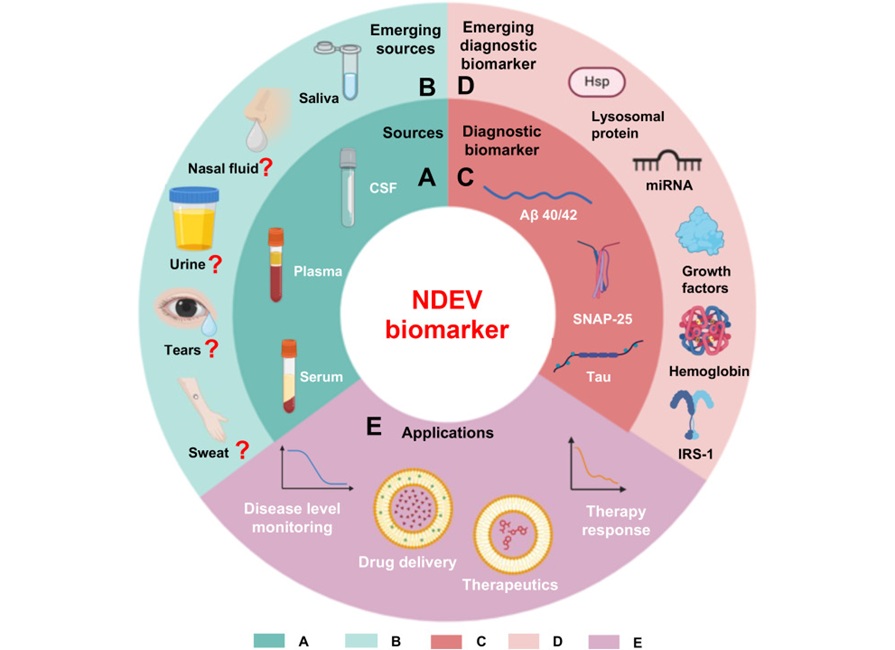
Neuron-Derived Extracellular Vesicles Could Improve Alzheimer’s Diagnosis
Alzheimer’s disease is becoming increasingly common as global populations age, yet effective treatments for advanced stages remain limited. Early detection is therefore critical, but current diagnostic... Read more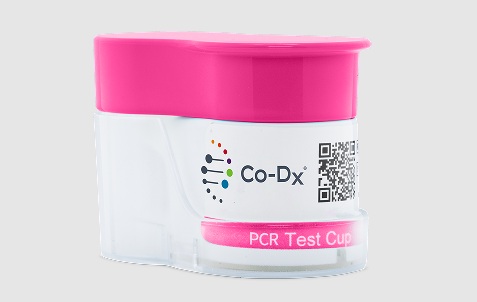
Sample Prep Instrument to Empower Decentralized PCR Testing for Tuberculosis
Tuberculosis remains the deadliest infectious disease worldwide despite being both treatable and curable when diagnosed early. A major barrier to timely diagnosis is that PCR-based TB testing is still... Read more
Endometriosis Blood Test Could Replace Invasive Laparoscopic Diagnosis
Endometriosis affects an estimated 1 in 10 women globally, yet diagnosis can take 7 to 10 years on average due to the invasive nature of laparoscopy and lack of accurate, non-invasive tests.... Read more
World's First NGS-Based Diagnostic Platform Fully Automates Sample-To-Result Process Within Single Device
Rapid point-of-need diagnostics are of critical need, especially in the areas of infectious disease and cancer testing and monitoring. Now, a direct-from-specimen platform that performs genomic analysis... Read moreHematology
view channel
MRD Tests Could Predict Survival in Leukemia Patients
Acute myeloid leukemia is an aggressive blood cancer that disrupts normal blood cell production and often relapses even after intensive treatment. Clinicians currently lack early, reliable markers to predict... Read more
Platelet Activity Blood Test in Middle Age Could Identify Early Alzheimer’s Risk
Early detection of Alzheimer’s disease remains one of the biggest unmet needs in neurology, particularly because the biological changes underlying the disorder begin decades before memory symptoms appear.... Read more
Microvesicles Measurement Could Detect Vascular Injury in Sickle Cell Disease Patients
Assessing disease severity in sickle cell disease (SCD) remains challenging, especially when trying to predict hemolysis, vascular injury, and risk of complications such as vaso-occlusive crises.... Read more
ADLM’s New Coagulation Testing Guidance to Improve Care for Patients on Blood Thinners
Direct oral anticoagulants (DOACs) are one of the most common types of blood thinners. Patients take them to prevent a host of complications that could arise from blood clotting, including stroke, deep... Read moreImmunology
view channel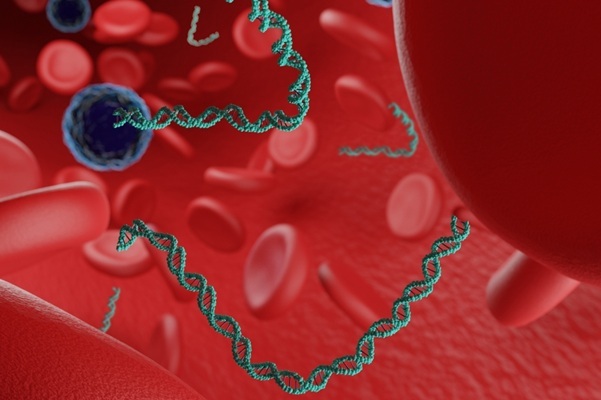
Ultrasensitive Liquid Biopsy Demonstrates Efficacy in Predicting Immunotherapy Response
Immunotherapy has transformed cancer treatment, but only a small proportion of patients experience lasting benefit, with response rates often remaining between 10% and 20%. Clinicians currently lack reliable... Read more
Blood Test Could Identify Colon Cancer Patients to Benefit from NSAIDs
Colon cancer remains a major cause of cancer-related illness, with many patients facing relapse even after surgery and chemotherapy. Up to 40% of people with stage III disease experience recurrence, highlighting... Read moreMicrobiology
view channel
New UTI Diagnosis Method Delivers Antibiotic Resistance Results 24 Hours Earlier
Urinary tract infections affect around 152 million people every year, making them one of the most common bacterial infections worldwide. In routine medical practice, diagnosis often relies on rapid urine... Read more
Breakthroughs in Microbial Analysis to Enhance Disease Prediction
Microorganisms shape human health, ecosystems, and the planet’s climate, yet identifying them and understanding how they are related remains a major scientific challenge. Even with modern DNA sequencing,... Read morePathology
view channel
AI Tool Simultaneously Identifies Genetic Mutations and Disease Type
Interpreting genetic test results remains a major challenge in modern medicine, particularly for rare and complex diseases. While existing tools can indicate whether a genetic mutation is harmful, they... Read more
Rapid Low-Cost Tests Can Prevent Child Deaths from Contaminated Medicinal Syrups
Medicinal syrups contaminated with toxic chemicals have caused the deaths of hundreds of children worldwide, exposing a critical gap in how these products are tested before reaching patients.... Read more
Tumor Signals in Saliva and Blood Enable Non-Invasive Monitoring of Head and Neck Cancer
Head and neck cancers are among the most aggressive malignancies worldwide, with nearly 900,000 new cases diagnosed each year. Monitoring these cancers for recurrence or relapse typically relies on tissue... Read moreTechnology
view channel
AI Predicts Colorectal Cancer Survival Using Clinical and Molecular Features
Colorectal cancer is one of the most common and deadly cancers worldwide, and accurately predicting patient survival remains a major clinical challenge. Traditional prognostic tools often rely on either... Read more
Diagnostic Chip Monitors Chemotherapy Effectiveness for Brain Cancer
Glioblastoma is one of the most aggressive and fatal brain cancers, with most patients surviving less than two years after diagnosis. Treatment is particularly challenging because the tumor infiltrates... Read moreIndustry
view channel
BD and Penn Institute Collaborate to Advance Immunotherapy through Flow Cytometry
BD (Becton, Dickinson and Company, Franklin Lakes, NJ, USA) has entered into a strategic collaboration with the Institute for Immunology and Immune Health (I3H, Philadelphia, PA, USA) at the University... Read more














